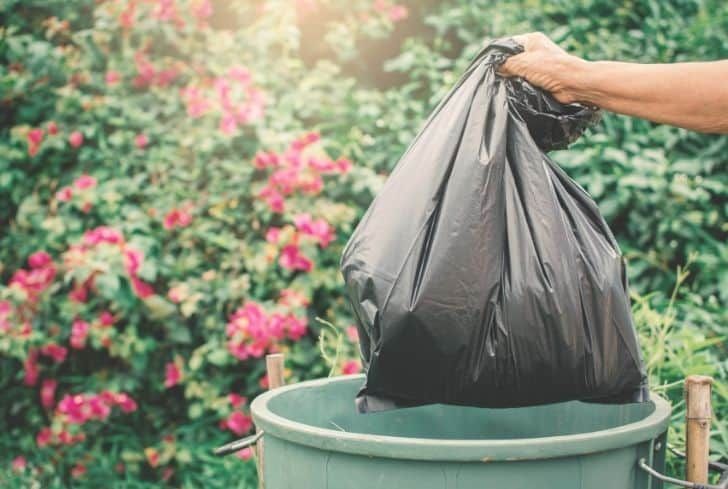In our modern world the quest for environmental sustainability is more urgent than ever. As concerns about plastic pollution continue to grow, many people are turning to eco-friendly alternatives to reduce their environmental footprint. Among these alternatives, biodegradable garbage bags have emerged as a popular choice. But what exactly are biodegradable garbage bags, and how can they make a difference in waste management? In this article, we’ll dive deep into the world of biodegradable garbage bags, exploring how they work, their benefits, and what you should consider when choosing them for your eco-conscious lifestyle.
What Are Biodegradable Garbage Bags?
Biodegradable garbage bags are designed to break down naturally over time through biological processes, unlike traditional plastic bags that persist in the environment for hundreds of years. These bags are crafted from materials that decompose more quickly and safely, reducing the impact of waste on our planet.
Materials Used in Biodegradable Garbage Bags
The key to biodegradable garbage bag’s lies in their composition. Instead of the non-biodegradable polyethylene used in traditional plastic bags, these bags are made from various plant-based materials. Some common materials include:
- Cornstarch: Derived from corn, cornstarch bags are among the most popular biodegradable options. They decompose relatively quickly and can be composted in industrial composting facilities.
- Sugar Cane: Another plant-based option, sugar cane bags are made from the fibrous byproducts of sugar production. They are biodegradable and can break down in composting environments.
- Vegetable Oil Derivatives: Some biodegradable bags use vegetable oils, like soybean oil, as a base material. These bags are designed to break down through both biological and environmental processes.
How Biodegradable Garbage Bags Work
Biodegradable garbage bags undergo a process of degradation that involves breaking down into natural substances like water, carbon dioxide, and biomass. This process occurs in two main ways:
- Composting: Many biodegradable bags are designed to be compostable, meaning they can break down in composting environments where conditions such as heat, moisture, and microbial activity speed up the decomposition process.
- Oxodegradation: Some biodegradable bags use additives that accelerate the breakdown of the plastic. These additives help the bags fragment into smaller pieces, which then degrade more rapidly. However, this method is less ideal as it can still leave microplastics behind.
The Benefits of Biodegradable Garbage Bags
Switching to biodegradable garbage bags offers several advantages over traditional plastic bags. Here’s how they can benefit both you and the environment:
Reduced Environmental Impact
Biodegradable garbage bags help mitigate the environmental impact of plastic waste. Unlike conventional plastic bags that can take centuries to decompose, biodegradable bags break down more quickly, reducing the amount of waste that lingers in landfills and natural habitats.
Less Pollution
By decomposing more rapidly, biodegradable bags reduce the risk of pollution in landfills and oceans. Traditional plastics can leach harmful chemicals into the soil and water, whereas biodegradable bags break down into less harmful substances.
Support for Sustainable Practices
Using biodegradable garbage bags supports the transition to more sustainable practices. Many of these bags are made from renewable resources, helping to reduce reliance on fossil fuels and decrease the carbon footprint associated with plastic production.
Easier Waste Management
In composting environments, biodegradable bags can be processed alongside organic waste, making it easier to manage and dispose of waste in an environmentally friendly manner. This can enhance the efficiency of waste disposal systems and contribute to the production of nutrient-rich compost.
Considerations When Choosing Biodegradable Garbage Bags
While biodegradable garbage bags offer numerous benefits, it’s important to make informed choices when selecting the right product for your needs. Here are some key considerations:
Certification and Standards
Look for biodegradable bags that are certified by recognized organizations, such as the Biodegradable Products Institute (BPI) or the European Standard EN 13432. Certification ensures that the bags meet specific standards for biodegradability and compostability.
Disposal Environment
Consider where and how you will dispose of the bags. Not all biodegradable bags break down effectively in home composting systems. Some require industrial composting facilities to decompose properly. Ensure that your local waste management system supports the type of biodegradable bag you choose.
Composition and Additives
Check the composition of the biodegradable bags and be aware of any additives used. Some bags may contain additives that accelerate degradation but can still leave microplastics behind. Opt for bags made from natural, plant-based materials without harmful additives.
Cost and Availability
Biodegradable garbage bag’s can be more expensive than traditional plastic bags. However, their environmental benefits often outweigh the cost. Consider purchasing in bulk or looking for cost-effective options to manage expenses.
Compatibility with Waste Management Systems
Ensure that the biodegradable bags are compatible with your local waste management systems. Some municipalities have specific guidelines for biodegradable waste, so it’s essential to follow these rules to avoid contamination of recycling and composting streams.
The Future of Biodegradable Garbage Bags
As environmental awareness continues to grow, the development of biodegradable garbage bag’s is evolving. Innovations in materials and manufacturing processes are making these bags more efficient and accessible. Here are some trends and future directions for biodegradable garbage bags.
Advancements in Materials
Researchers are continuously working on new, more effective materials for biodegradable bags. Innovations include bio-based plastics made from algae, fungi, and other sustainable sources. These materials have the potential to improve the performance and environmental impact of biodegradable bags.
Increased Availability
As demand for eco-friendly products increases, more manufacturers are entering the market with a variety of biodegradable garbage bags. This increased competition is likely to lead to greater availability and potentially lower prices for consumers.
Enhanced Standards and Regulations
Governments and organizations are likely to introduce stricter standards and regulations for biodegradable products. This will ensure that products meet high environmental and performance standards, providing greater assurance to consumers.
Integration with Circular Economy
The concept of a circular economy, where products are designed to be reused, recycled, or composted, will likely play a significant role in the future of biodegradable garbage bags. Integrating these bags into a circular economy model can further enhance their environmental benefits and sustainability.
Conclusion
Biodegradable garbage bag’s represent a significant step forward in reducing plastic waste and promoting environmental sustainability. By understanding how these bags work, their benefits, and the considerations for choosing them, you can make informed decisions that align with your eco-conscious values. While biodegradable garbage bag’s are not a complete solution to the plastic waste problem, they are an important tool in the broader effort to create a cleaner and more sustainable world.
By opting for biodegradable garbage bags, you contribute to a reduction in environmental pollution and support the use of renewable resources. As innovations continue to improve these products, they will play an increasingly important role in waste management and environmental protection. So, next time you’re in the market for garbage bags, consider making the switch to a more sustainable option and join the movement toward a greener future.







